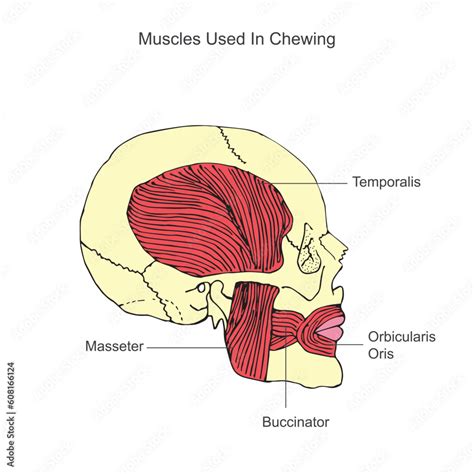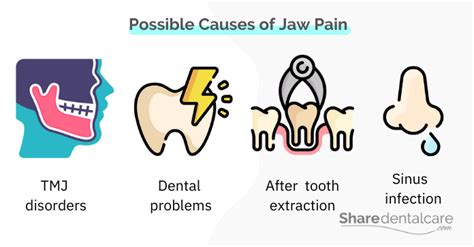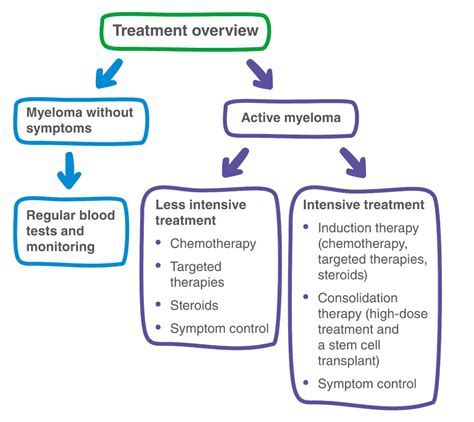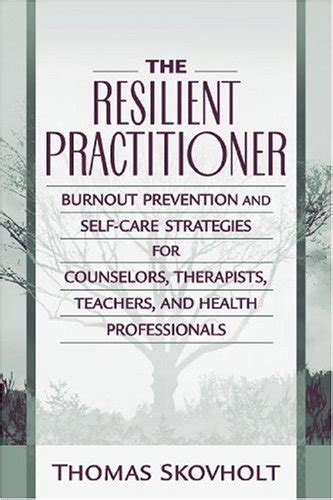Intro
Discover the causes of soreness under the jaw, including TMJ disorders, teeth grinding, and sinus pressure, and learn how to alleviate jaw pain and tension with effective remedies and treatments.
Pain and discomfort in the jaw area can be quite debilitating, affecting not only our ability to eat and speak but also our overall quality of life. Soreness under the jaw, in particular, is a common complaint that can stem from a variety of causes, ranging from mild to severe. Understanding the potential reasons behind this type of pain is crucial for seeking the right treatment and finding relief. Whether it's due to a temporary issue like a cold or a more chronic condition such as temporomandibular joint (TMJ) disorder, recognizing the signs and symptoms is the first step towards healing.
The jaw area is complex, comprising bones, muscles, and joints that work together to facilitate movements like chewing, talking, and even breathing. Given its intricate structure, it's no surprise that soreness under the jaw can be caused by a multitude of factors, including dental problems, sinus issues, and muscle strain. Furthermore, the proximity of the jaw to other sensitive areas like the ears and throat means that pain can sometimes be referred, making diagnosis a bit more challenging. Despite these complexities, medical professionals have identified several key causes of jaw soreness, and with the right diagnosis, effective treatment plans can be put into place.
For individuals experiencing soreness under the jaw, it's essential to approach the issue with a comprehensive understanding, considering both the immediate symptoms and the potential underlying causes. This might involve a visit to a dentist to rule out dental issues, a consultation with an ear, nose, and throat (ENT) specialist to check for sinus problems, or even a session with a physical therapist to address muscle tension. By taking a holistic view of health and exploring all possible avenues, those affected can better navigate their journey towards recovery and relief from jaw pain.
Understanding Jaw Anatomy

To grasp the concept of soreness under the jaw, it's vital to have a basic understanding of the jaw's anatomy. The jawbone, or mandible, is the largest and strongest bone in the face, playing a pivotal role in the lower face structure. It works in conjunction with the temporal bone of the skull to form the temporomandibular joint (TMJ), a unique joint that allows for both rotational and translational movements. The TMJ is surrounded by muscles, ligaments, and tendons that enable jaw movement, making it one of the most complex and dynamic joints in the human body.
Key Components of the Jaw
- Mandible (Jawbone): The lower jawbone that articulates with the skull.
- Temporomandibular Joint (TMJ): The joint connecting the mandible to the temporal bone of the skull.
- Muscles of Mastication: These include the masseter, temporalis, medial pterygoid, and lateral pterygoid muscles, responsible for jaw movements.
- Ligaments and Tendons: Connective tissues that provide support and facilitate movement of the jaw.
Causes of Soreness Under the Jaw

The causes of soreness under the jaw are diverse and can be categorized into several main groups, including dental issues, muscular problems, and systemic conditions. Dental problems such as toothaches, abscesses, and gum disease can cause pain that radiates to the jaw area. Muscular issues, including strain from clenching or grinding teeth (bruxism), can lead to soreness and stiffness in the jaw muscles. Systemic conditions like temporomandibular joint disorder (TMD), sinus infections, and even heart conditions can also manifest as jaw pain.
Common Causes:
- Bruxism: Grinding or clenching the teeth, often during sleep, leading to muscle strain and jaw pain.
- TMJ Disorder: A condition affecting the joint that connects the jaw to the skull, causing pain and discomfort.
- Dental Problems: Issues like tooth decay, gum disease, or dental abscesses can cause pain that feels like it's coming from under the jaw.
- Sinus Infections: Inflammation of the sinuses can cause pain in the face, including the jaw area.
- Heart Conditions: In some cases, jaw pain can be a symptom of a heart attack or angina, especially in women.
Diagnosis and Treatment

Diagnosing the cause of soreness under the jaw involves a combination of physical examination, medical history, and sometimes, diagnostic tests like X-rays or MRI scans. Treatment plans vary widely depending on the underlying cause but can include pain relief medications, dental treatments, physical therapy, or in some cases, surgery. For issues like bruxism, a dentist may recommend a mouth guard to wear at night to prevent teeth grinding. For TMJ disorders, treatments might include jaw exercises, stress reduction techniques, or the use of a splint to help align the jaw properly.
Treatment Options:
- Pain Management: Over-the-counter pain relievers or prescription medications to manage pain and inflammation.
- Dental Treatments: Fillings, crowns, root canals, or extractions for dental issues.
- Physical Therapy: Exercises and stretches to relieve muscle tension and improve jaw mobility.
- Surgery: In severe cases, such as advanced TMJ disorder or significant dental issues, surgical intervention may be necessary.
Prevention and Self-Care

Preventing soreness under the jaw and practicing self-care can significantly reduce the risk of developing jaw pain and improve overall jaw health. This includes maintaining good oral hygiene, avoiding habits like teeth grinding or clenching, and managing stress through relaxation techniques. Regular dental check-ups can help identify and address dental issues before they become severe. Additionally, being mindful of posture and taking regular breaks when performing activities that involve prolonged jaw use, such as eating or talking, can also help prevent strain.
Self-Care Tips:
- Good Oral Hygiene: Regular brushing, flossing, and dental check-ups.
- Stress Management: Techniques like meditation, yoga, or deep breathing exercises.
- Posture Awareness: Maintaining good posture to reduce strain on the jaw.
- Dietary Changes: Avoiding hard or chewy foods that can exacerbate jaw pain.
Conclusion and Next Steps

In conclusion, soreness under the jaw is a symptom that warrants attention and proper diagnosis to identify the underlying cause. By understanding the anatomy of the jaw, recognizing the potential causes of jaw pain, and exploring treatment options, individuals can take proactive steps towards relief and recovery. Whether through self-care practices, dental treatments, or medical interventions, there are numerous paths to addressing jaw soreness and improving overall well-being.
For those experiencing persistent or severe jaw pain, it's crucial to consult with healthcare professionals who can provide personalized advice and treatment plans. By staying informed, seeking professional help when needed, and adopting preventive measures, individuals can navigate their journey towards a healthier, pain-free jaw.
What are the common symptoms of TMJ disorder?
+Pain or tenderness in the jaw, face, and temples, clicking or popping sound when opening or closing the mouth, and difficulty chewing or discomfort while biting are common symptoms of TMJ disorder.
How can I prevent teeth grinding at night?
+Using a mouth guard, reducing stress through relaxation techniques, and avoiding stimulating activities before bedtime can help prevent teeth grinding at night.
What should I do if I experience severe jaw pain?
+If you experience severe jaw pain, especially if it's accompanied by other symptoms like difficulty breathing or chest pain, seek immediate medical attention. For less severe cases, consult with a dentist or healthcare provider to determine the cause and appropriate treatment.
We invite you to share your experiences or questions about soreness under the jaw in the comments below. Your insights can help others who may be going through similar situations, and together, we can foster a community of support and understanding. If you found this article informative, please consider sharing it with others who might benefit from this information. Let's work together towards a healthier and more compassionate community.
